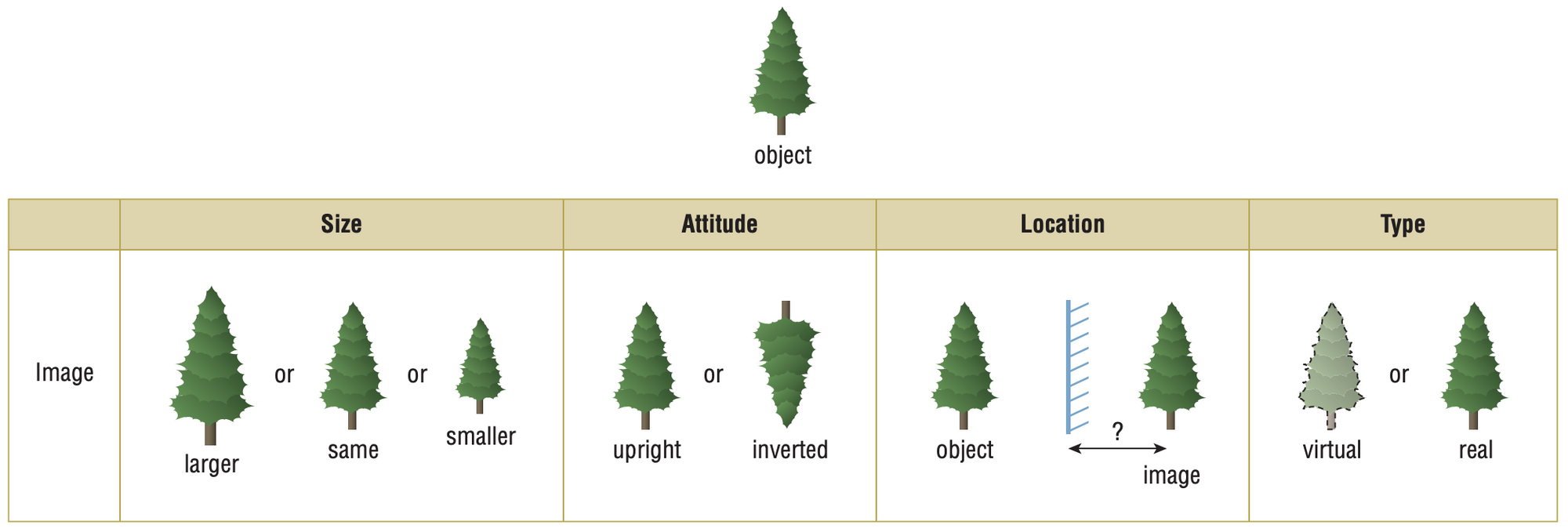Chapter 11 - Nelson Science 10
Note: 11.3, 11.5, 11.8 are not in the curriculum
11.1 - What is Light?
Medium
- Any physical substance through which energy can be transferred
Light does not require a medium for transmission (can travel through the vacuum of outer space), so it is transferred through radiation.
Radiation
- A method of energy transfer that does not require a medium; the energy travels at the speed of light.
Electromagnetic wave
- A wave that has both electric and magnetic parts, does not require a medium, and travels at the speed of light.
Visible light
- Electromagnetic waves that the human eye can detect
Electromagnetic spectrum
The classification of electromagnetic waves by energy

Uses of Electromagnetic Waves:
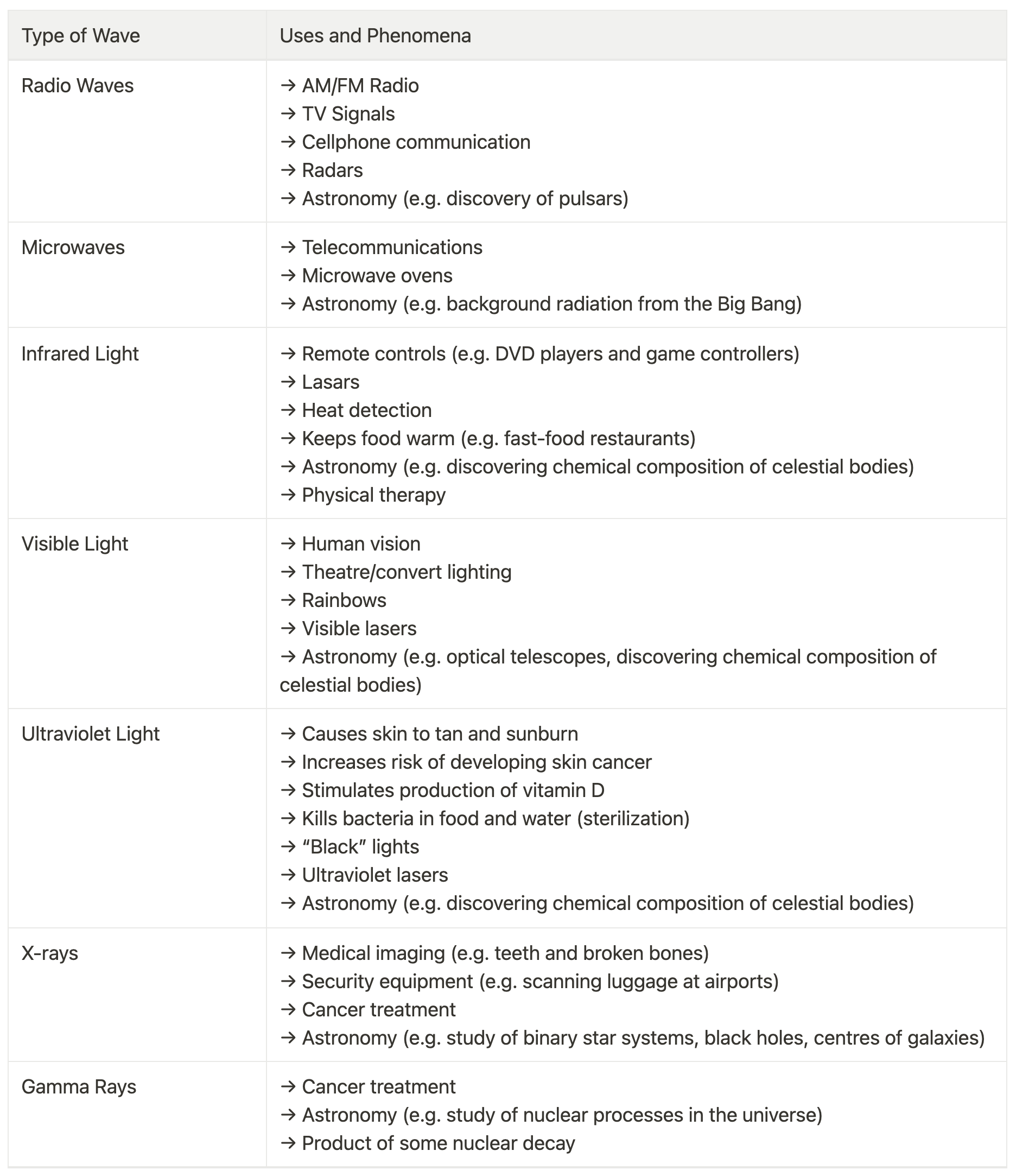
The visible spectrum:

11.2 - How is Light Produced?
Luminous - Produces its own light (e.g. sun, candles)
Non-luminous - Does not produce its own light (e.g. pencils, textbooks)
Any object, as it gets hotter, the colours of light produced change from red, to orange, to yellow, to white, and then to bluish-white.
Incandescence
- Production of light as a result of high temperature
- Incandescent light bulb
- Has a thin wire filament, usually made of tungsten, that glows as electricity passes through it
- Filament becomes so hot that it gives off visible light
- Also emits infrared light that you feel as heat radiating from the bulb
- Only 5-10% of electricity is actually converted into visible light, the rest is converted into infrared light (inefficient)
- For an incandescent bulb to work, all the air from the bulb must be removed and replaced with non-reactive gas. (O2 can cause filament to burst into flames)
- Without O2 present, the filament eventually disintegrates and breaks
Electric Discharge
- The process of producing light by passing an electric current through a gas (e.g. neon lights)
- Heinrich Geissler created a powerful vacuum pump to remove most of the air from a closed tube.
- The remaining air glowed when an electric current was passed through it.
- Colour of glow depended on the type of gas that was inside the tube
Phosphorescence
- The process of producing light by the absorption of ultraviolet light resulting in the emission of visible light over an extended period of time. (e.g. glow-in-the-dark)
- Phosphors absorb light energy, primarily ultraviolet light.
- It keeps some of the energy and releases visible light of lower energy
Fluorescence
The immediate emission of visible light as a result of the absorption of ultraviolet light
- E.g. detergent to make clothes brighter
Fluorescent lights make use of both electric discharge and fluorescence
- Tube is filled with low-pressure mercury vapour and the inner surface is coated with a fluorescent material.
- When turned on, the electric current causes the mercury atoms to emit ultraviolet light.
- UV light then strikes the fluorescent inner surface of the tube, resulting in the production of visible light.
- 4-5x more efficient than incandescent bulbs (less heat + less electricity)
- Downside: contain mercury and should not be disposed of with regular household waste (hazardous)
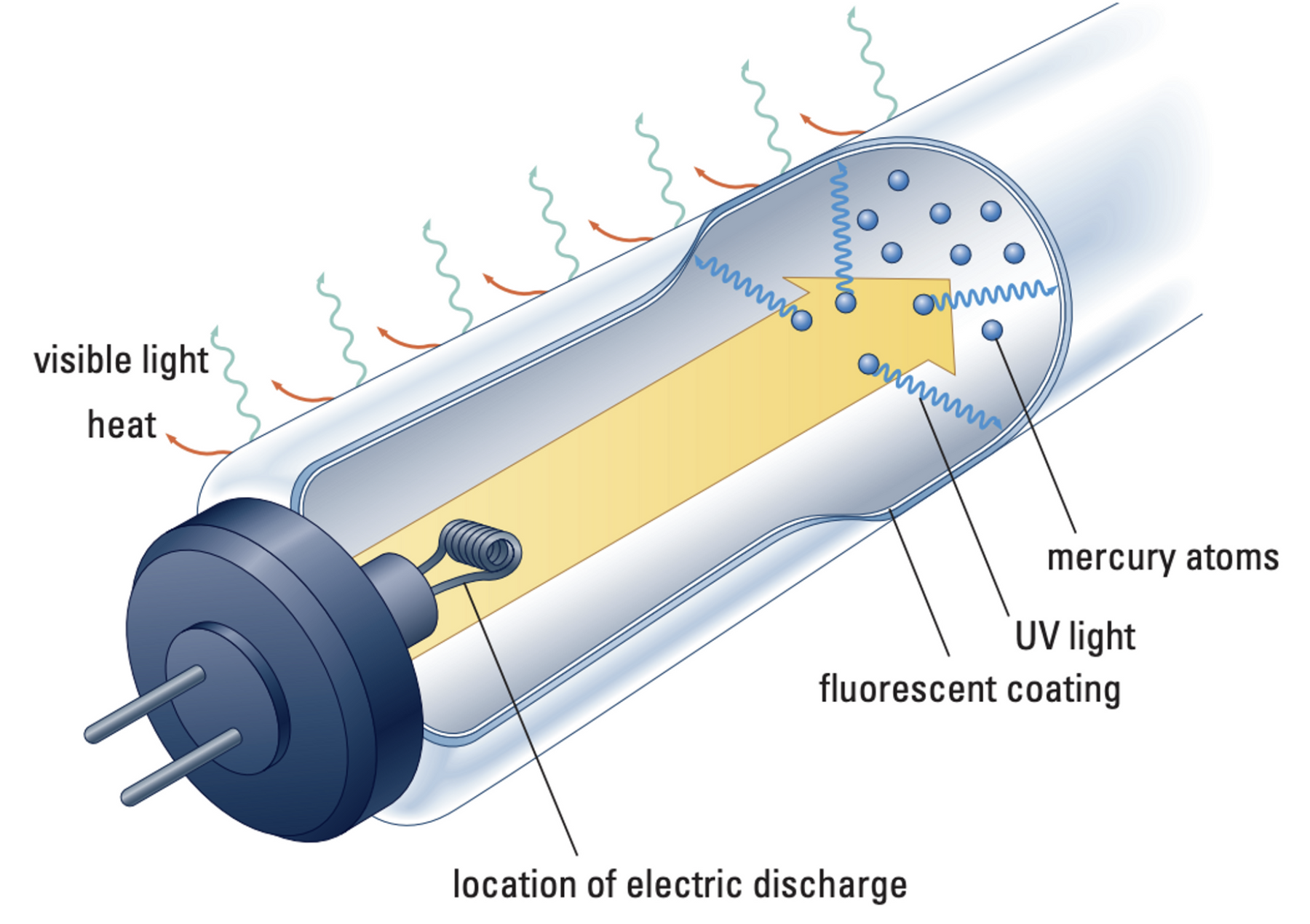
Chemiluminescence
The direct production of light as the result of a chemical reaction with little or no heat produced
Light sticks operate by causing 2 chemicals to mix
- One chemical is in a narrow, small glass vial in the middle of the stick, the second is in the main body of the stick.
- Bending causes the small glass vial to break, allowing the chemicals to mix and produce visible light.
- Inexpensive to manufacture
- Very popular for use in camping, law enforcement, military personnel, entertainment venues, emergency situations, underwater divers

Bioluminescence
- The production of light in living organisms as the result of a chemical reaction with little or no heat produced
- E.g. glow in a firefly is caused by a chemical reaction of oxygen and luciferin (enzyme)
Triboluminescence
- Production of light from fiction as a result of scratching, crushing, or rubbing certain crystals
Light-Emitting Diodes (LEDs)
- Light produced as a result of an electric current flowing in semiconductors
- Semiconductor
- A material that allows an electric current to flow in only one direction
- Compared to incandescent bulbs, LEDs do not require a filament, do not produce as much heat as a by-product, and is more energy efficient
11.4 - The Ray Model of Light (Terminology)
Light travels in straight lines.
Light ray
- A line on a diagram representing the direction and path that light is travelling
Geometric optics
- The use of light rays to determine how light behaves when it strikes objects
Incident light
- Light emitted from a source that strikes an object
Transparent
- When a material transmits all or almost all incident lights; objects can be clearly seen through the material (e.g. clear glass)
Translucent
- When a material transmits some incident light but absorbs or reflects the rest; objects are not clearly seen through the material (e.g. frosted glass)
Opaque
- When a material does not transmit any incident light; all incident light is either absorbed or reflected; objects behind the material cannot be seen at all (e.g. cardboard)
Image
- Reproduction of an object through the use of light
Mirror
- Any polished surface reflecting an image
Reflection
- The bouncing back of light from a surface
Mirrors consist of 2 parts: front part is a sheet of glass and the back part is a thin layer of reflective silver or aluminum.
The symbol used in physics to represent a mirror refers only to the reflective thin film
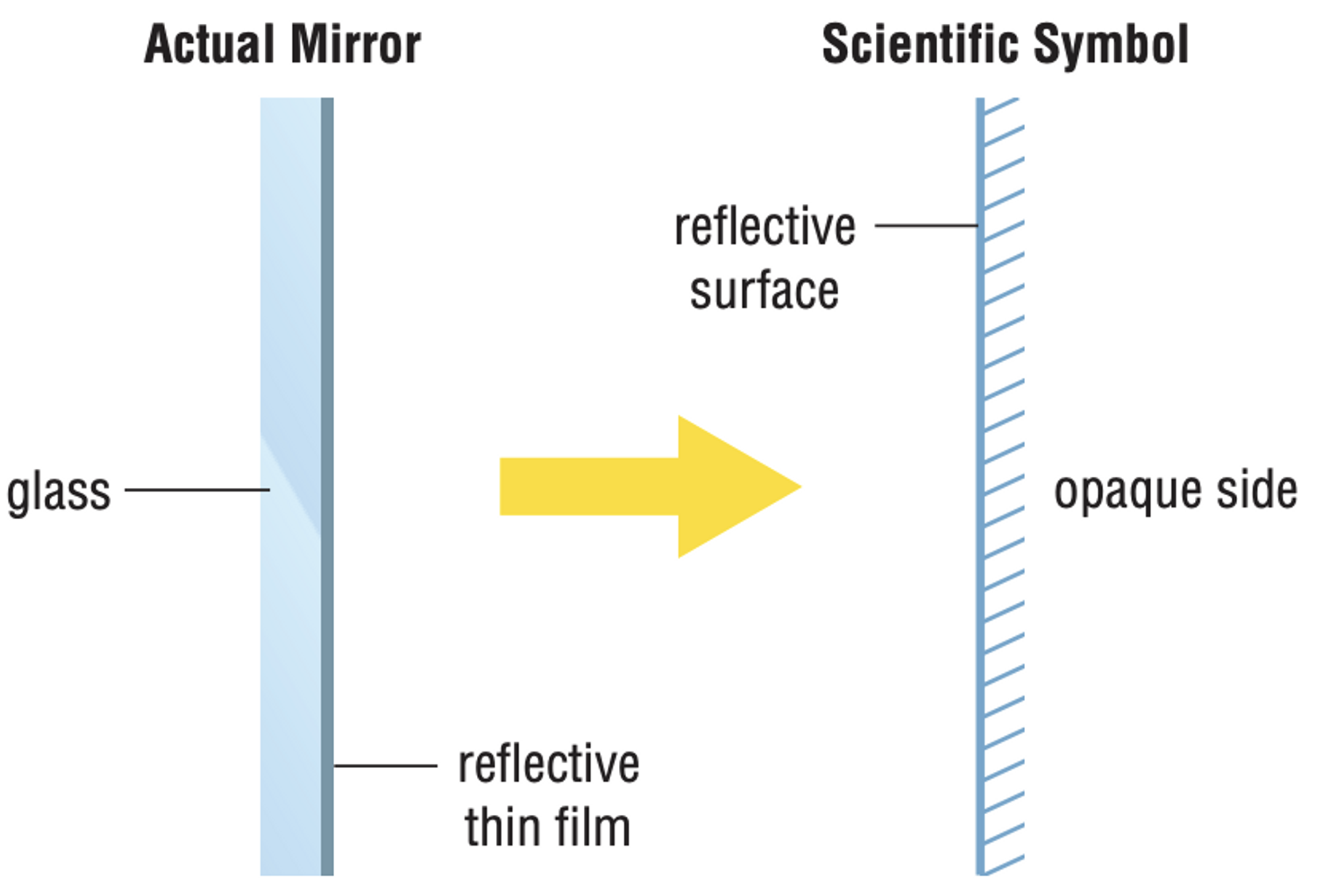
A plane (flat) mirror illustrates how predictable the path of light is when it hits the mirror.
Incident ray
- The incoming ray that strikes a surface
Reflected ray
- The ray that bounces off a reflective surface
normal
- The perpendicular line to a mirror surface
Perpendicular
- At right angles
Angle of incidence
- The angle between the incident ray and the normal
Angle of reflection
- The angle between the reflected ray and the normal
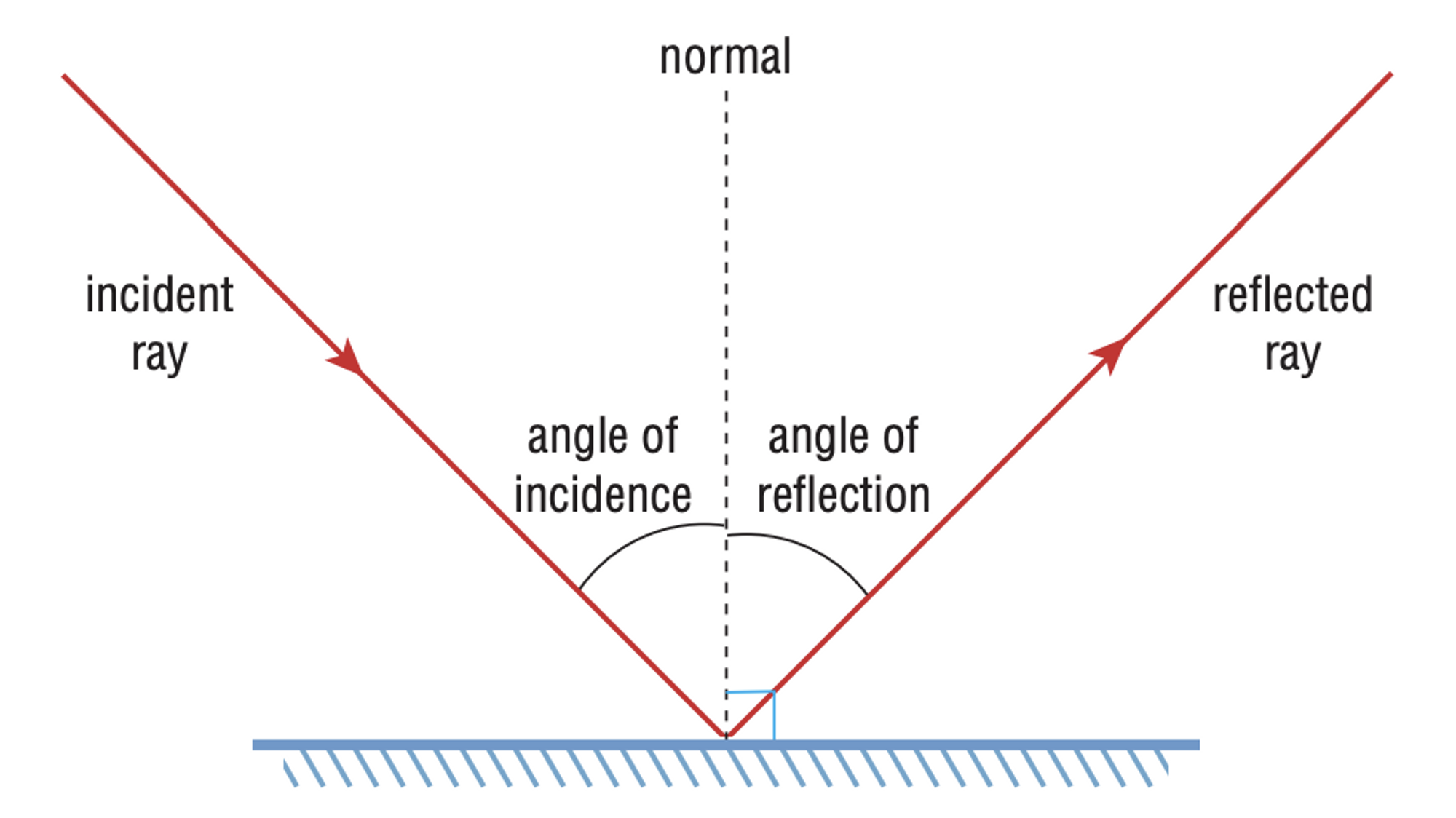
11.6 - The Laws of Reflection
The two laws of reflection:
Angle of incidence = angle of reflection
The incident ray, the reflected ray, and the normal all lie in the same plane
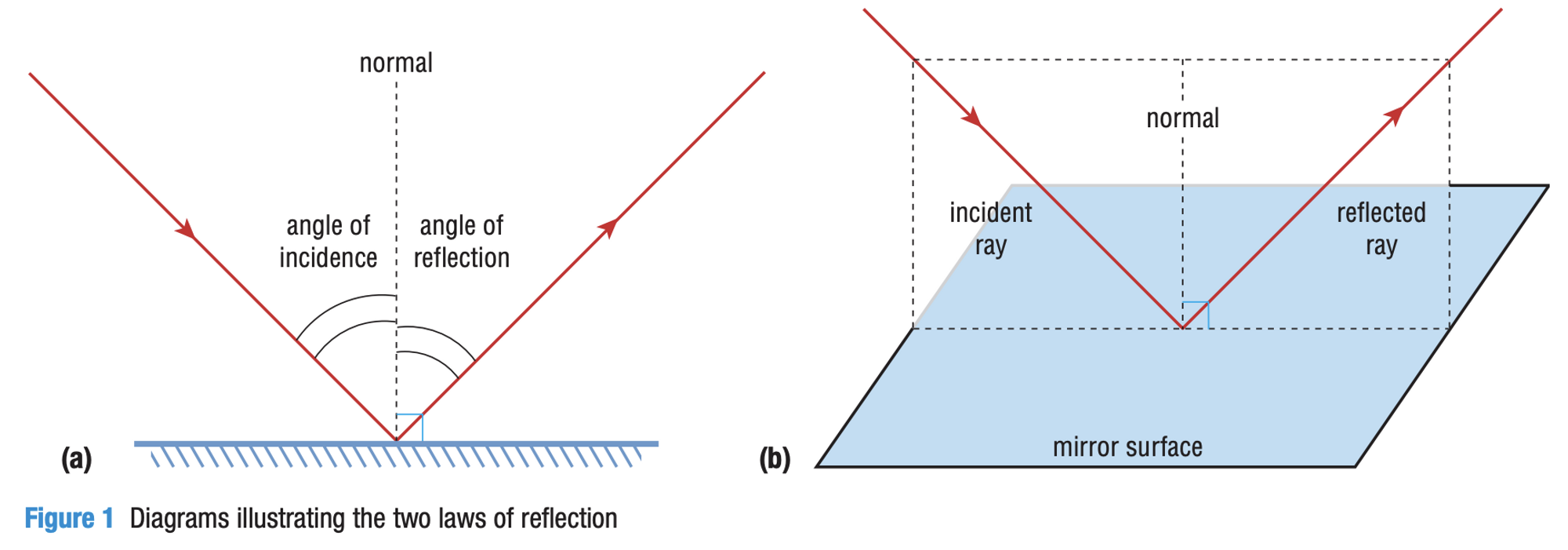
When more than one incident ray is reflected off a surface, the laws of reflection still apply by the surface affects the way you see the reflected rays.
Specular Reflection
Reflection of light off a smooth surface
A series of parallel incident rays that strike a smooth surface will have identical angles of incidence (meaning that angles of reflection will all be identical and reflected rays will all be parallel to each other)
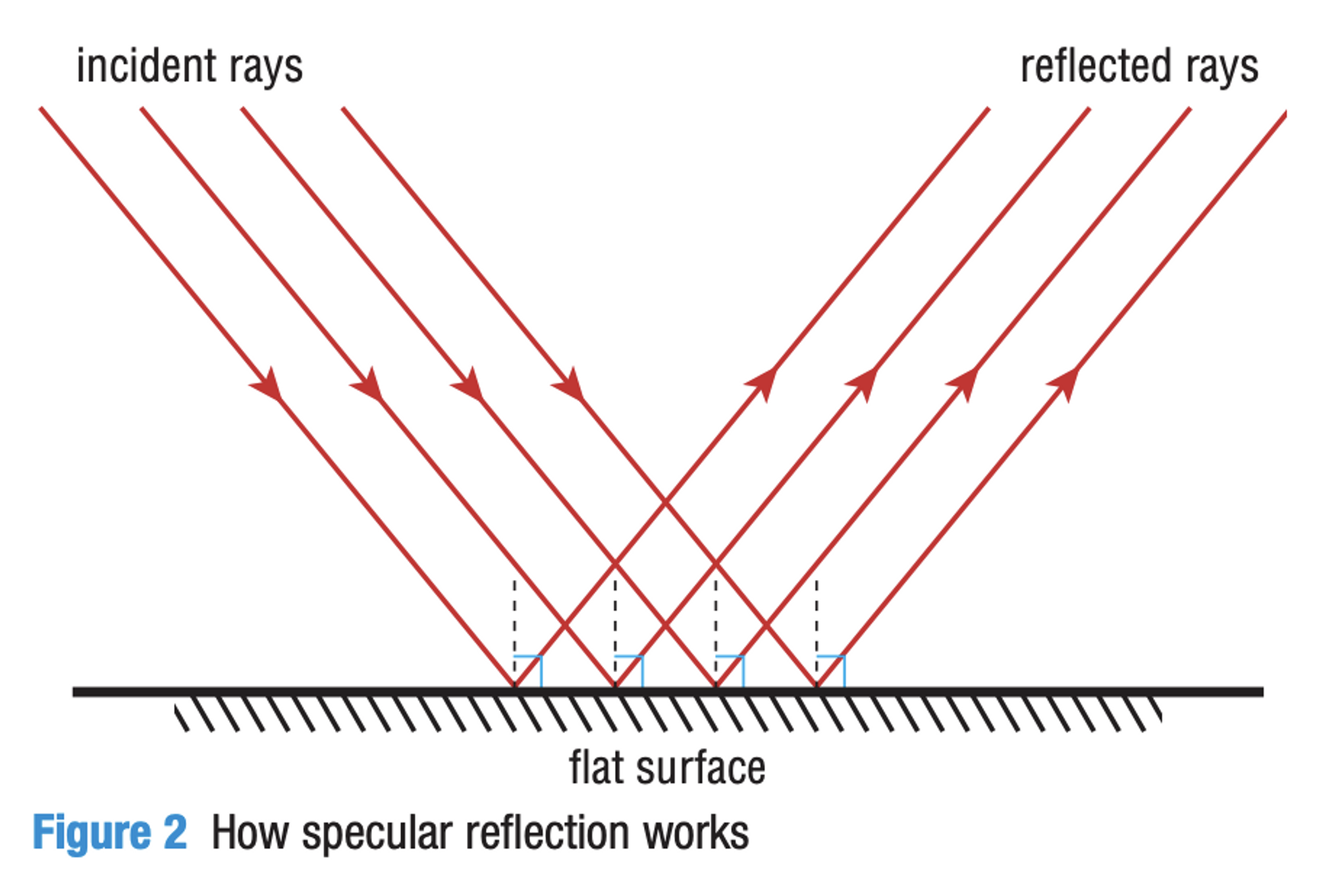
On the contrary, if parallel incident rays were directed at an irregular surface, the incident rays would all have different angles of incidence, thus also different angles of reflection. The reflected rays would also be scattered in many different directions.
Diffuse reflection - Reflection of light off an irregular or dull surface
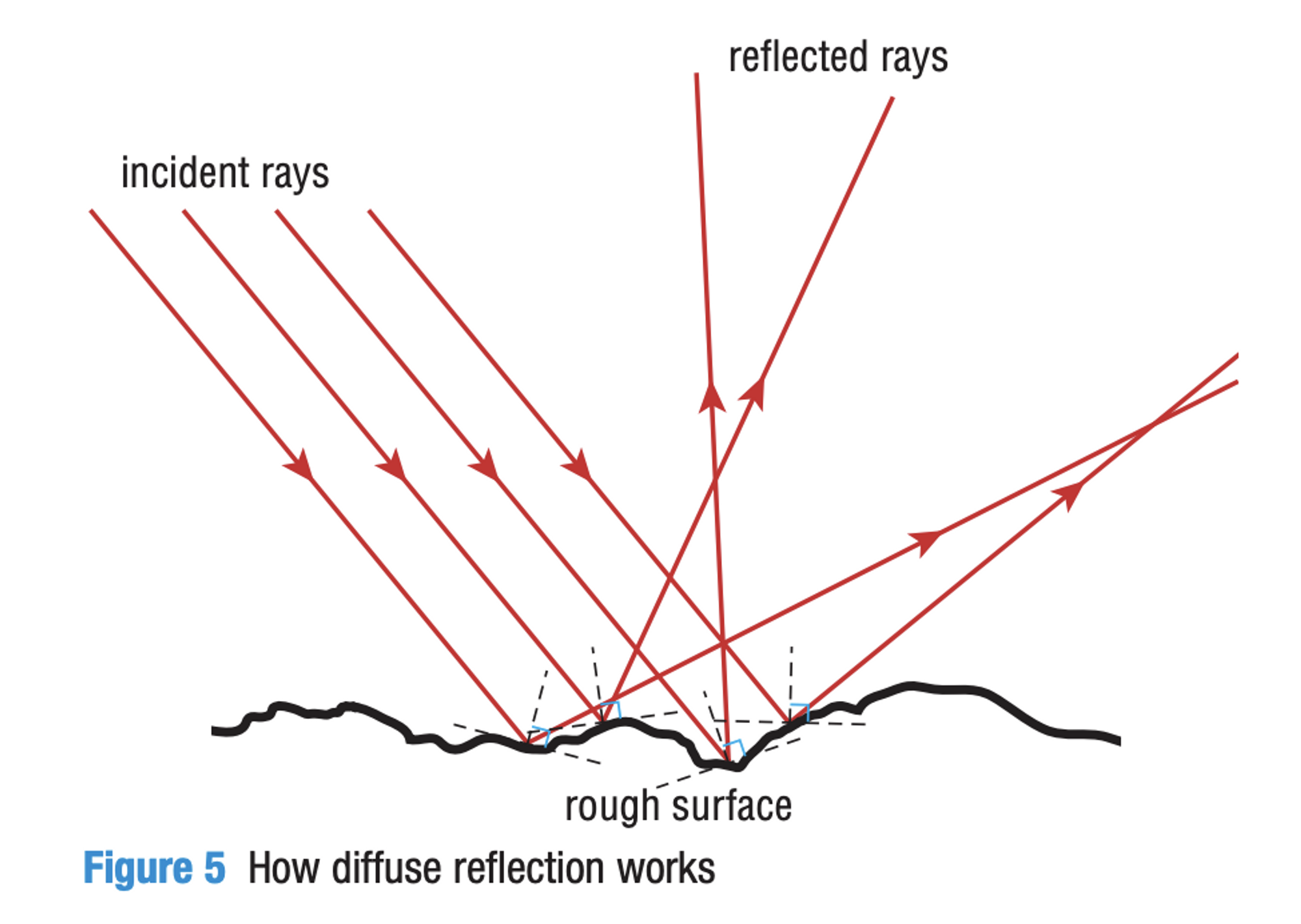
11.7 - Images in Plane Mirros
Virtual image
An image formed by light coming from an apparent light source; light is not arriving at or coming from the actual image location.
Belief that light travels in a straight line is so strong that when your eyes detect reflected light from a plane mirror, your brain projects these light rays backwards in a straight line.
- Results in your brain thinking that there is a light source behind the mirror and that this is where the light rays originate.
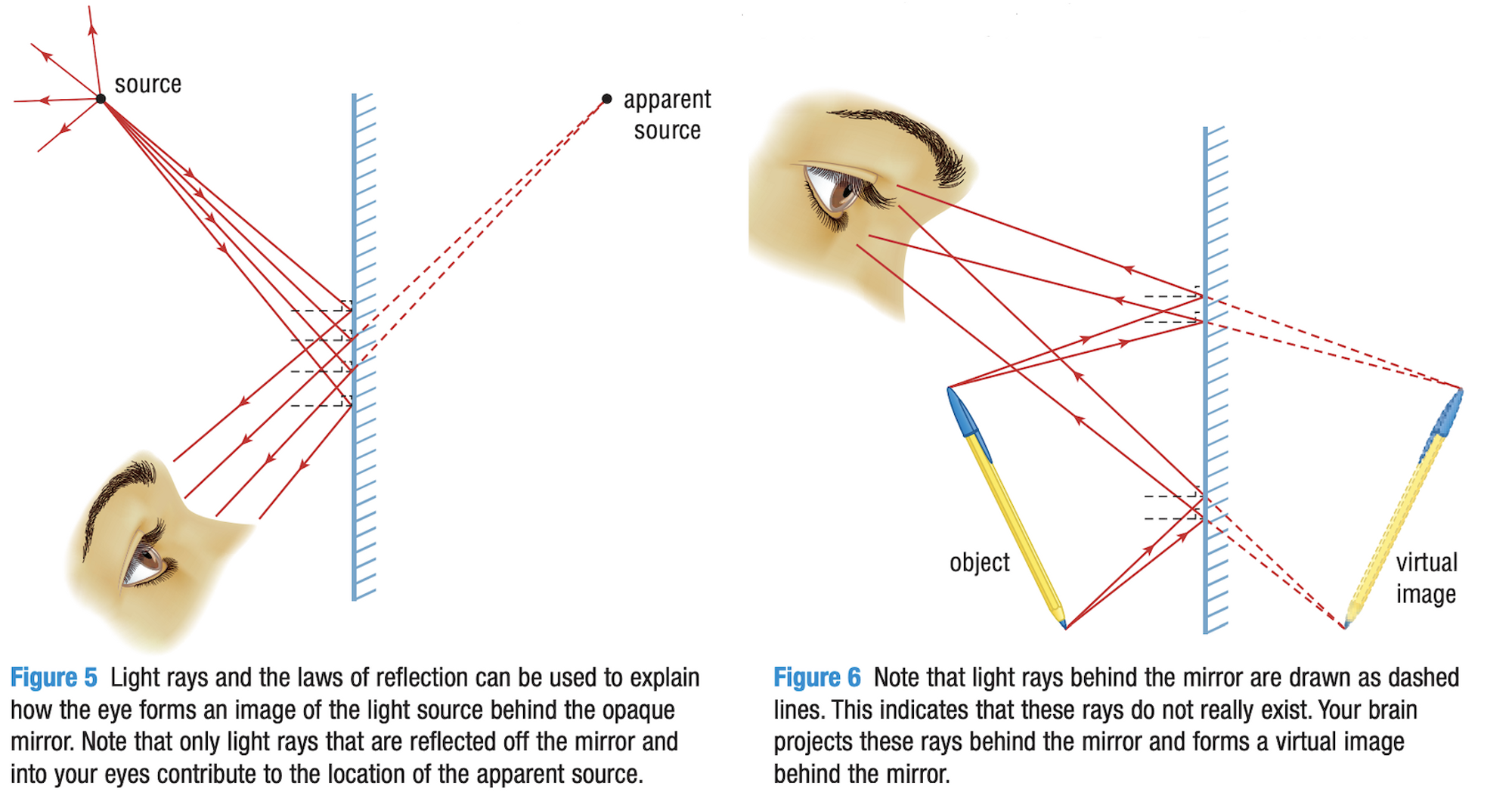
You can use light rays and the laws of reflection to show how a plane mirror produces a virtual image and where that is located.
The distance from the object to the mirror is exactly the same as the distance from the image to the mirror. In other words, the image appears to be located the same distance behind the mirror as the object is in front of the mirror.
The object-image line is perpendicular to the mirror surface.

Lateral inversion
The orientation of an image in a plane mirror that is backwards and in reverse order

The SALT Acronym
When you describe the properties of an image, you need to examine 4 characteristics:
- Size of image (compared to the object: same size, smaller, or larger)
- Attitude of image (which way the image is oriented compared to the object: upright or inverted)
- Location of image
- Type of image (real or virtual). A real image is an image formed where light is actually arriving at the same location.
An image in a plane mirror is always the same size as the object (size), upright by laterally inverted (attitude), behind the mirror and the same distance behind as the object is in front (location), and virtual (type).
